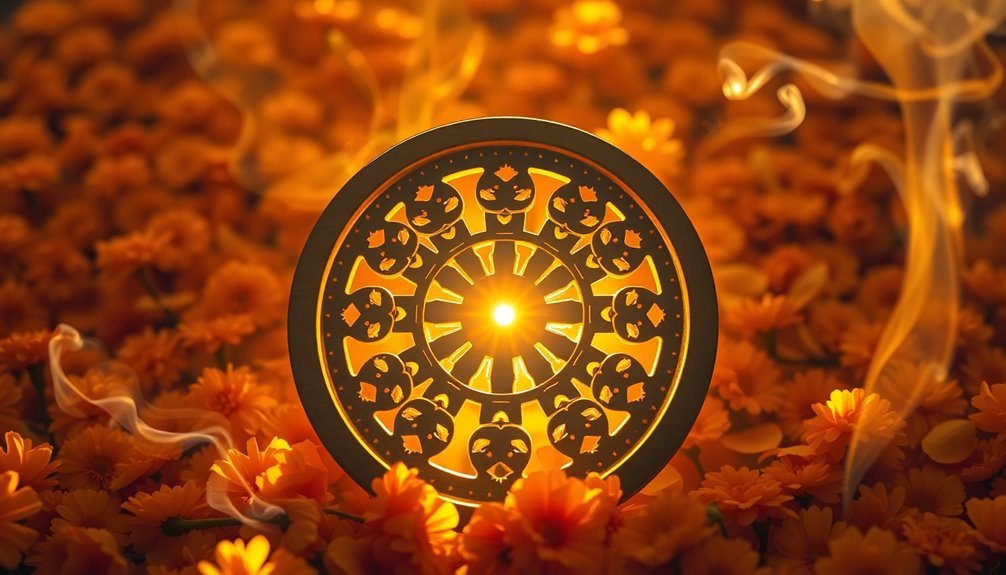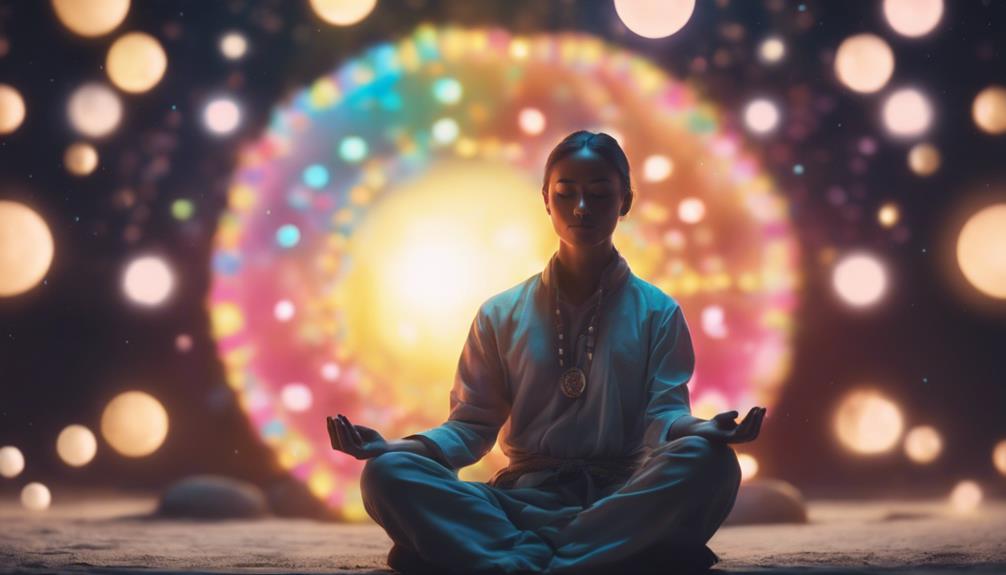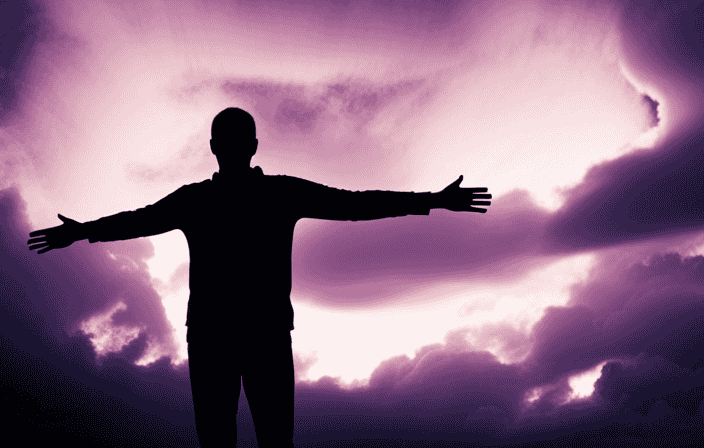The "Namaste" greeting, meaning "I bow to you," is becoming popular in the West for its deep sense of respect and connection. You may notice it popping up in yoga studios, airports, and even everyday interactions. This gesture promotes mindfulness and emotional wellness, especially as people seek safer, non-contact greetings. With roots in Indian culture, Namaste emphasizes humility and the interconnectedness of all. Younger generations are embracing it, blending traditions and social norms. If you're curious about how this simple gesture impacts modern society and community interactions, there's plenty more to explore.
Key Takeaways
- Namaste, meaning "I bow to you," reflects respect and connection, gaining popularity as a mindful greeting in Western societies.
- The gesture's adoption surged during the COVID-19 pandemic, offering a safe, non-contact alternative to traditional greetings.
- Younger generations embrace Namaste for its cultural significance and inclusivity, using it in various social settings.
- The practice enhances mindfulness, reduces stress, and fosters emotional connections, aligning with wellness trends in modern life.
- Public figures and cultural exchange contribute to Namaste's popularity, promoting understanding and respect in diverse interactions.
The Essence of Namaste
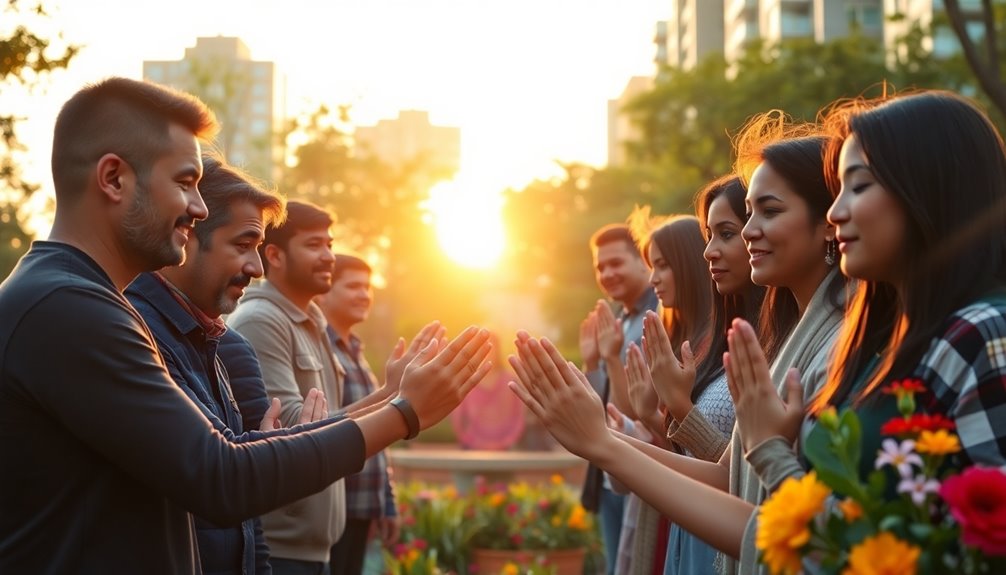
When you say "Namaste," you're not just greeting someone; you're acknowledging the divine essence within them. Derived from Sanskrit, Namaste means "I bow to you," symbolizing a profound gesture of respect. When you place your hands together near your heart and bow slightly, you're doing more than a simple sign of hello; you're fostering a sense of connection and humility.
This practice isn't just a formality; it reflects the belief in the interconnectedness of all people. By using Namaste, you encourage compassion and ethical treatment in your interactions, recognizing that each person carries their own divine spark. This gesture transcends mere words, inviting a deeper understanding of one another.
In recent years, the growing adoption of Namaste in Western cultures highlights a shift towards more meaningful and mindful greetings, especially in the wake of the COVID-19 pandemic. People are increasingly seeking ways to connect on a deeper level, and Namaste serves as a beautiful reminder of our shared humanity.
As you embrace this greeting, you're not just participating in a trend; you're celebrating the divine within everyone you encounter.
Historical Context and Origins
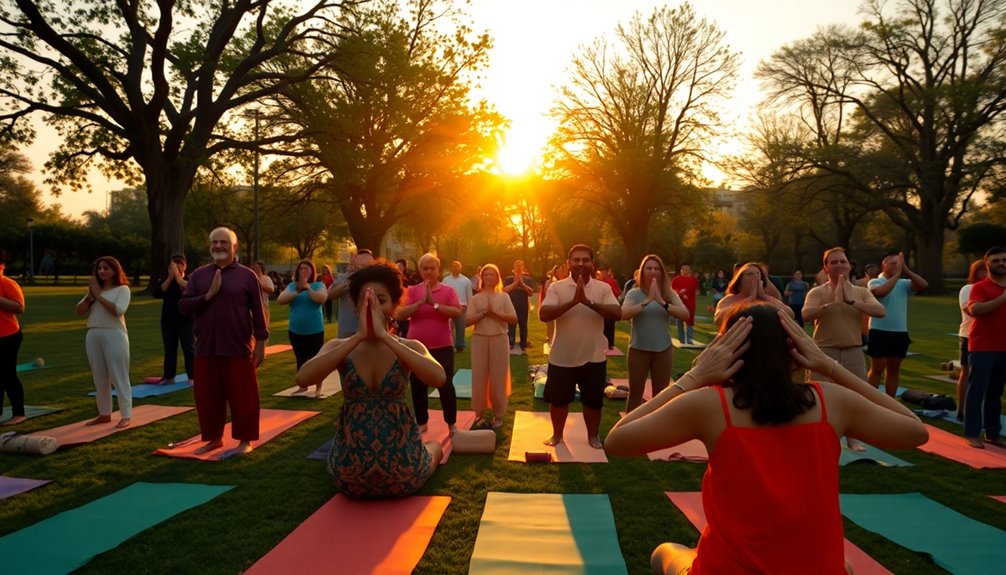
To understand the historical context of Namaste, you need to look at ancient greeting practices that shaped its evolution.
This gesture, rooted in respect and humility, has transformed over centuries, reflecting deeper spiritual beliefs.
As you explore its journey, you'll see how Namaste became a universal symbol of connection and acknowledgment.
Ancient Greeting Practices
Throughout history, greeting practices have played a significant role in human interaction, reflecting cultural values and social norms. One of the oldest is the handshake, believed to symbolize peace by showing empty hands. Its origins trace back to ancient Greece, where it demonstrated goodwill and trust between individuals.
In contrast, the gesture of Namaste, meaning "I bow to you" in Sanskrit, has deep roots in Indian culture, emphasizing respect and recognition of others. Namaste not only serves as a social greeting but also encapsulates a profound philosophical meaning. It acknowledges the divine within each individual, fostering a sense of connection and mutual respect.
This ancient gesture stands apart from other greetings by its spiritual undertone, inviting people to appreciate the essence of one another. As traditional greeting customs evolve, the COVID-19 pandemic has prompted a shift toward safer, non-contact alternatives, like Namaste. This shift aligns with the growing understanding of mental wellbeing as communities seek to promote healthier interactions.
Evolution of Namaste
The evolution of the Namaste greeting reveals a rich tapestry of cultural significance and historical depth. Originating from Sanskrit, "Namaste" translates to "I bow to you," embodying a gesture of respect and humility. For centuries, Namaste has been a part of Indian culture, acknowledging the divinity within others.
When you press your palms together at your heart and bow slightly, you're recognizing the interconnectedness of all beings.
As yoga practices spread in the West during the late 20th century, Namaste gained global popularity. Its principles of mindfulness and respect resonated deeply, making it a preferred greeting in wellness communities.
The COVID-19 pandemic further accelerated this trend, as many sought safe, non-contact alternatives to handshakes and hugs. Namaste emerged as a more profound sign of respect, inviting people to connect emotionally and spiritually without physical contact.
Today, you'll find Namaste used in various contexts, transcending its original cultural roots while retaining its essence. As you embrace this greeting, you participate in a tradition that celebrates respect, connection, and the recognition of the divine in everyone around you. Additionally, the practice of yoga often incorporates essential oils for relaxation, enhancing the overall experience of mindfulness and spiritual connection.
Namaste in Modern Society
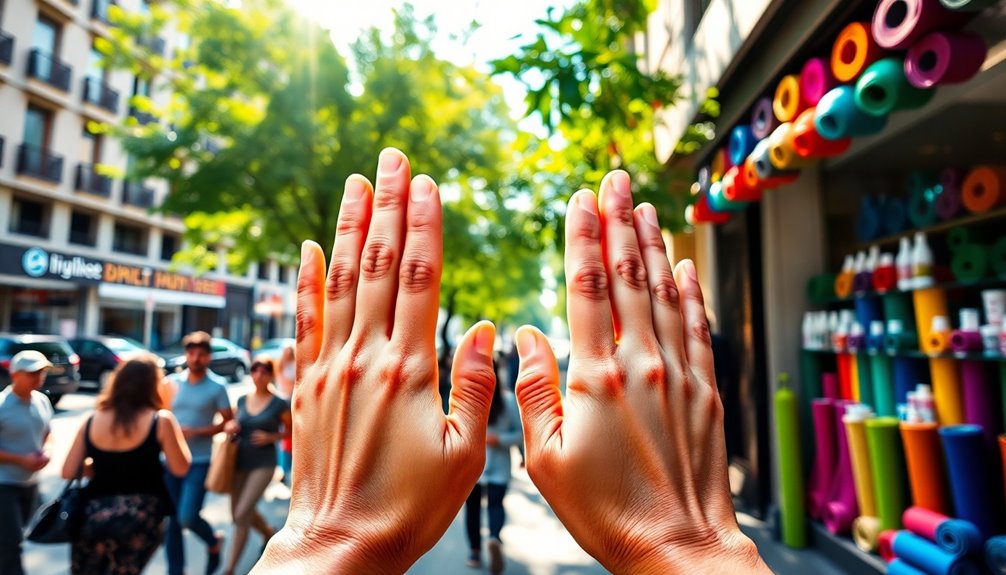
Connection has become more essential than ever in modern society, and the gesture of Namaste exemplifies this shift. As we navigate through a world increasingly focused on safety and meaningful interactions, you may have noticed how Namaste has gained traction as a non-contact greeting, especially during the COVID-19 pandemic. This simple gesture honors the divine in each person and fosters a sense of respect and connection, making it particularly appealing in various social settings.
Younger generations are embracing Namaste, reflecting a growing appreciation for cultural traditions, even amidst Western influences. It's not uncommon to see this gesture utilized in airports and public spaces, marking its acceptance across diverse environments.
Whether you're leaving a yoga class or greeting someone at the grocery store, Namaste serves as a bridge between Eastern and Western cultures.
Moreover, the integration of Namaste into wellness practices worldwide highlights a trend toward mindfulness and deeper connections. As you engage with this gesture, you're participating in a global movement that values inclusivity, respect, and the recognition of shared humanity—principles that resonate loudly in today's interconnected world.
Spiritual and Health Benefits
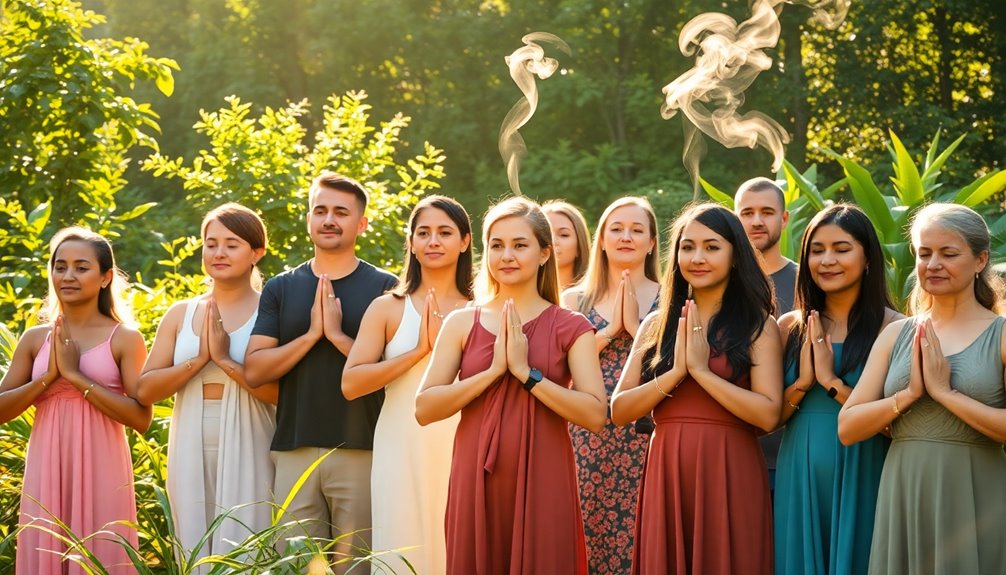
Many people underestimate the spiritual and health benefits of the Namaste gesture. This simple act does more than just convey respect; it actively promotes balance and calmness by engaging pressure points in your hands. You'll find that practicing Namaste can reduce your stress levels, enhance mental clarity, and foster emotional well-being.
Here's a glimpse of its benefits:
| Spiritual Benefits | Health Benefits |
|---|---|
| Enhances mindfulness | Improves flexibility |
| Fosters a sense of community | Boosts blood circulation |
| Promotes emotional connection | Supports immune function |
| Encourages respect for others | Reduces stress and promotes relaxation |
| Cultivates resilience | Contributes to overall well-being |
Incorporating Namaste into your daily routine not only helps you connect with others but also nurtures your own spiritual and emotional health. You'll discover that this gesture encourages a deeper sense of respect, both for yourself and those around you. By embracing Namaste, you're not just adopting a greeting; you're enhancing your overall quality of life. Additionally, the practice of Namaste can be linked to adaptogenic properties that help reduce stress and promote overall health.
Cultural Adaptation in the West

Across the West, the Namaste greeting has increasingly become a symbol of respect and connection, especially in light of the COVID-19 pandemic. You've likely noticed its rise as a popular, non-contact alternative to handshakes and hugs in various settings, from airports to wellness centers. This cultural adaptation reflects a broader societal shift towards mindfulness and deeper connections in communication.
Young individuals are particularly embracing Namaste, blending this traditional gesture with their contemporary social interactions. It's not just about saying hello; it's about acknowledging shared humanity and fostering a sense of belonging. The gesture symbolizes humility and reverence, resonating with many who seek meaningful relationships in their daily lives.
Public figures and celebrities have also played a significant role in popularizing Namaste, integrating it into Western etiquette and promoting its spiritual significance. As a result, this greeting aligns with the increasing emphasis on self-care practices that prioritize emotional well-being and community connection.
As you observe this trend, you may find that adopting Namaste not only enhances your own interactions but also contributes to a more respectful and mindful society. In embracing this greeting, you're participating in a cultural exchange that enriches your understanding of connection and community.
Namaste Across Different Communities
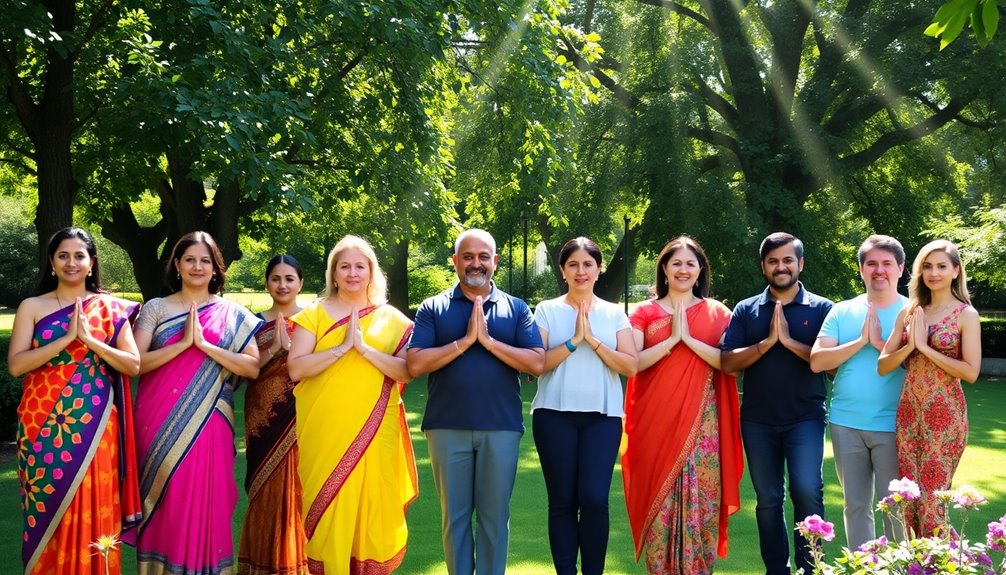
In various communities, Namaste has evolved into a powerful gesture of inclusivity and mutual respect.
You've likely seen it embraced widely, especially as an alternative to traditional greetings like handshakes and hugs, particularly after COVID. This simple gesture symbolizes unity and respect, making it accessible to people from diverse spiritual and cultural backgrounds.
As you engage with yoga practitioners, you'll notice how they often incorporate Namaste at the end of classes. This practice reinforces mindfulness and a spiritual connection that resonates with many.
Public figures and celebrities have also played a role in popularizing Namaste, showcasing it in various settings from airports to social media.
Future of the Namaste Greeting

The growing embrace of Namaste as a greeting signals a shift in how we connect with one another in a post-pandemic world. As we seek new ways to express respect and connection, Namaste, which means "I bow," offers a profound alternative. Its rise in popularity reflects our desire for inclusivity and mindfulness, fostering deeper relationships.
Imagine a future where:
- Meetings begin with a Namaste, setting a respectful tone.
- Friends greet each other with this gesture, reinforcing bonds in a casual way.
- Ceremonies incorporate Namaste, blending traditions and cultures seamlessly.
- Communities come together near, using this greeting as a universal sign of goodwill.
As these shifts take place, the Namaste greeting may influence social norms, encouraging us to appreciate cultural diversity more than ever.
By adopting this respectful gesture, we not only honor its roots but also create a space for greater understanding among diverse populations.
Frequently Asked Questions
What Does Namaste Literally Mean Spiritually?
Namaste literally means "I bow to you," reflecting a profound respect for the divine presence within others.
When you say it, you acknowledge the shared spirit connecting everyone, fostering unity and interconnectedness.
This greeting encourages you to recognize the worth of those around you, promoting gratitude and humility.
Can White People Say Namaste?
Some might argue that "Namaste" should only be used by those from its cultural origins.
However, you can absolutely say "Namaste" as long as you approach it with respect and understanding.
This gesture embodies acknowledgment of the divine in others, transcending cultural boundaries.
What Is the Meaning of Namaste 🙏?
Namaste means "I bow to you," reflecting a deep respect and acknowledgment of another person's presence.
When you bring your palms together near your heart, you're recognizing the divine spark within them. This gesture promotes humility, gratitude, and a sense of interconnectedness.
In today's world, especially after COVID, it serves as a meaningful non-contact greeting, allowing you to connect with others compassionately and respectfully without physical touch.
What Is the Hidden Meaning of Namaste?
When you consider the hidden meaning of "Namaste," think of respect, connection, and unity.
It's not just a greeting; it's a heartfelt acknowledgment of another's spirit. By bowing and bringing your palms together, you recognize the divine within yourself and others.
This gesture fosters humility, promotes inclusivity, and creates a sense of oneness in a world that often feels divided.
Embracing this meaning can deepen your interactions and enrich your relationships.
Conclusion
In embracing the essence of "Namaste," you're not just adopting a greeting; you're connecting with a deeper sense of respect and unity. As this ancient practice flourishes in modern society, it raises a question: can a simple gesture truly bridge cultural divides? By understanding its roots and significance, you can contribute to a more harmonious world, where appreciation for diverse traditions enriches your life and those around you. So, why not share this beautiful practice in your daily interactions?

